The next generation of single cell is here
Introducing Chromium Single Cell Gene Expression v4 and Single Cell Immune Profiling v3, powered by new GEM-X technology
- Partition and barcode your cells 3x faster
- Achieve cell recovery efficiency rates of up to 80%
- Reduce multiplet rates two-fold
- Lower sequencing costs by up to 50%



Uncover new insights
Discover cellular diversity, rare cells, and disease-linked cell types.

Single cell immune profiling fuels biomarker discovery in cancer samples
Check out three separate studies from researchers at Columbia University and MD Anderson that provide impactful insights into cancer research.

Single cell multiomics reveals kidney cell behind erythropoietin, master regulator of red blood cell production
Explore a recent Nature Medicine publication, where researchers used single cell transcriptomic and epigenetic analyses to identify the cell type behind the production of erythropoietin, opening up anemia treatment possibilities.

Organoids bring drug discovery and development to the culture hood
Explore the work of four research teams using single cell RNA-seq and organoids to identify druggable pathways in liver disease, screen drugs for kidney disease, model drug metabolism in the liver, and study therapeutic responses in oncology patient-derived models.
Capture RNA, protein, chromatin and more
Get a complete picture with versatile assays that profile multiple analytes.

Probe-based gene expression for fresh, frozen, and FFPE samples
Our most sensitive whole transcriptome analysis with the flexibility to fix, batch, and run samples on your schedule.

3' gene expression
A versatile solution providing 3' transcriptomic profiling with options for multiomic analysis.

5' gene expression with immune repertoire profiling
Assay with multiomic capabilities and options for comprehensive analysis of immune diversity, including BCR or TCR repertoire profiling.

Chromatin accessibility and gene expression from the same nucleus
Simultaneously profile the transcriptome and epigenome at single cell resolution.

Chromatin accessibility
Analyze thousands of unique open chromatin fragments per cell with scATAC-seq.
Directly link CRISPR guide RNAs to the resulting perturbed phenotypes
Capture protein alongside gene expression to better characterize complex biology
Accelerate therapeutic discovery with rapid, antigen-specific clonotype identification
Success, right out of the box
Our user-friendly instruments bring reproducibility and efficiency to your bench for everything from pilot studies to million-cell experiments.
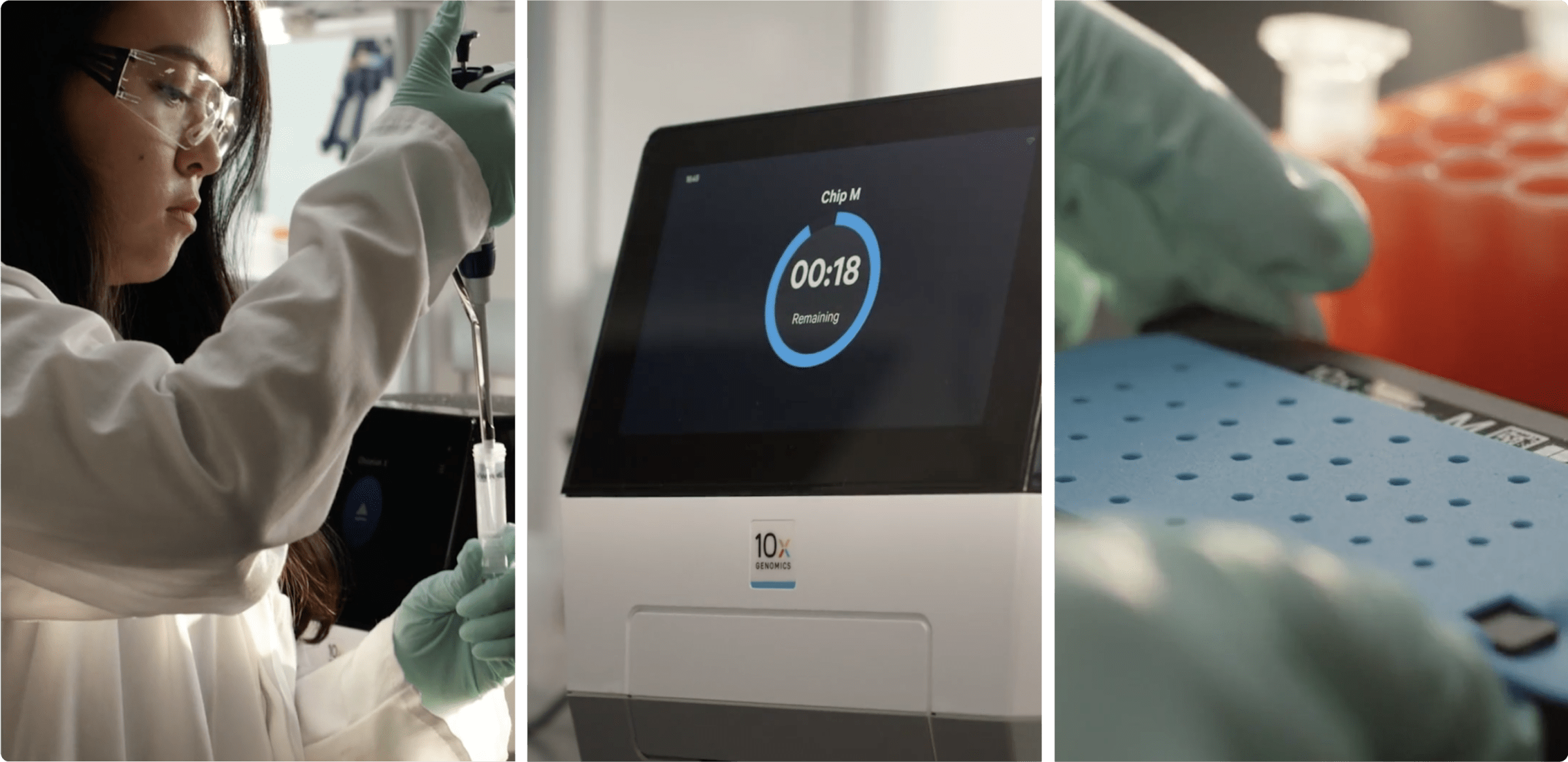
Intuitive analysis, included
Our suite of software tools is included with your assay purchase, enabling you to process and visualize data, even without bioinformatics experience.
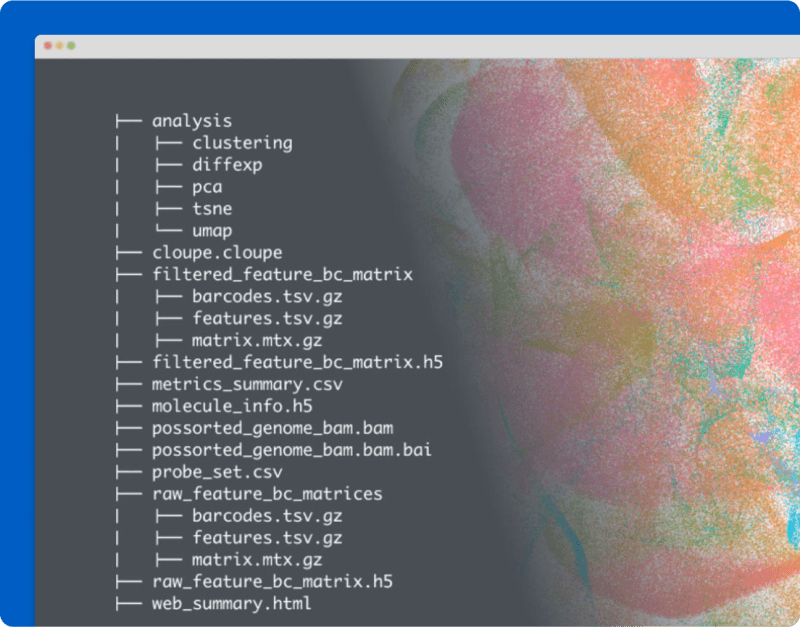 Turn raw sequencing data into cell-feature matrices
Turn raw sequencing data into cell-feature matricesStart with Cell Ranger, our set of analysis pipelines for Chromium Single Cell data, to align reads and process data.
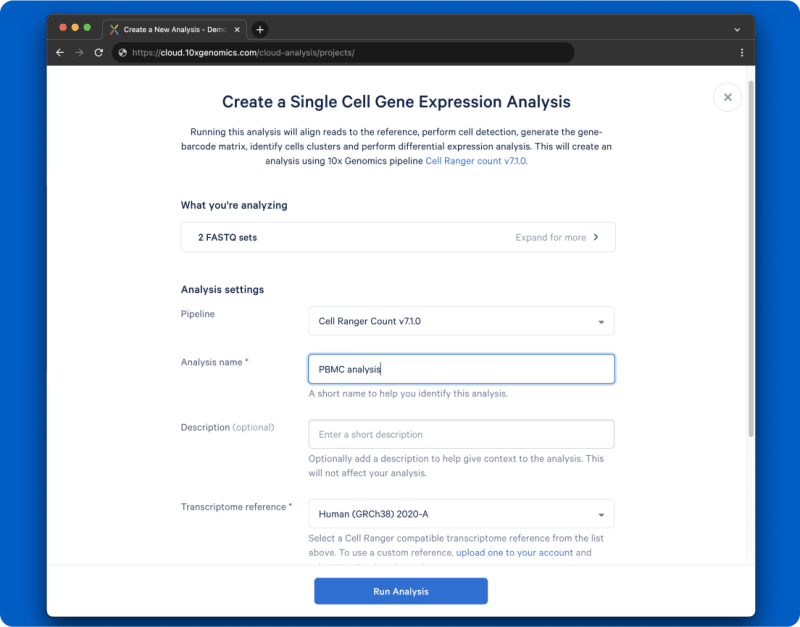 Accelerate time to results using our fast cloud infrastructure
Accelerate time to results using our fast cloud infrastructureCloud Analysis enables quick and easy access to Cell Ranger pipelines from your web browser.
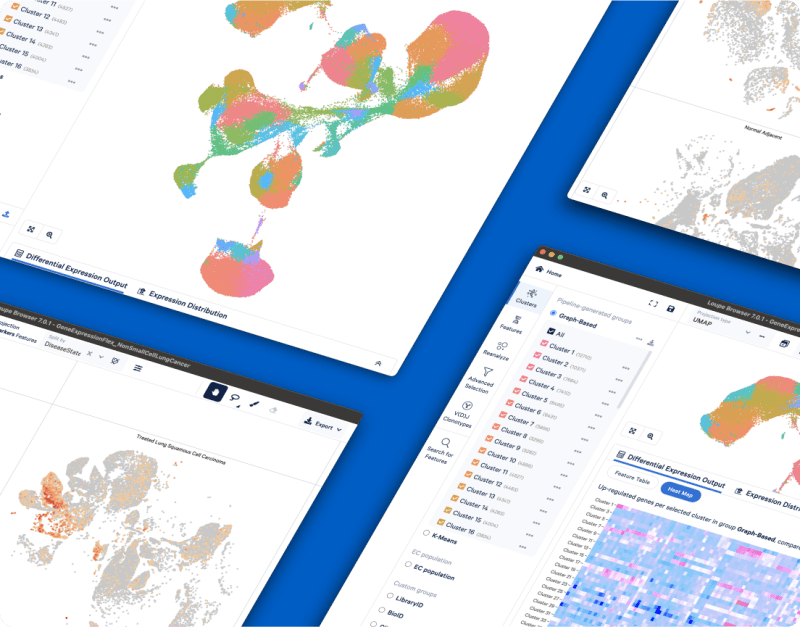 Inspect clusters and examine expression patterns
Inspect clusters and examine expression patternsInteractively explore your Cell Ranger results using Loupe Browser. Examine gene expression patterns, annotate cell types, and generate figures.
Resources
 Access single cell datasets
Access single cell datasetsFilter by sample type, species, disease state, preservation method, and more.
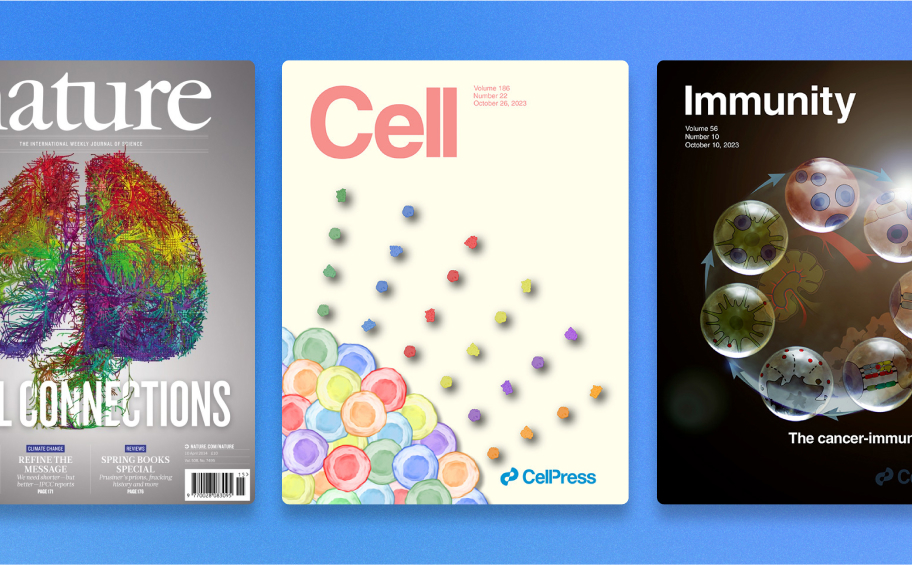 Browse peer-reviewed publications
Browse peer-reviewed publicationsExplore how researchers use Chromium to power impactful science.
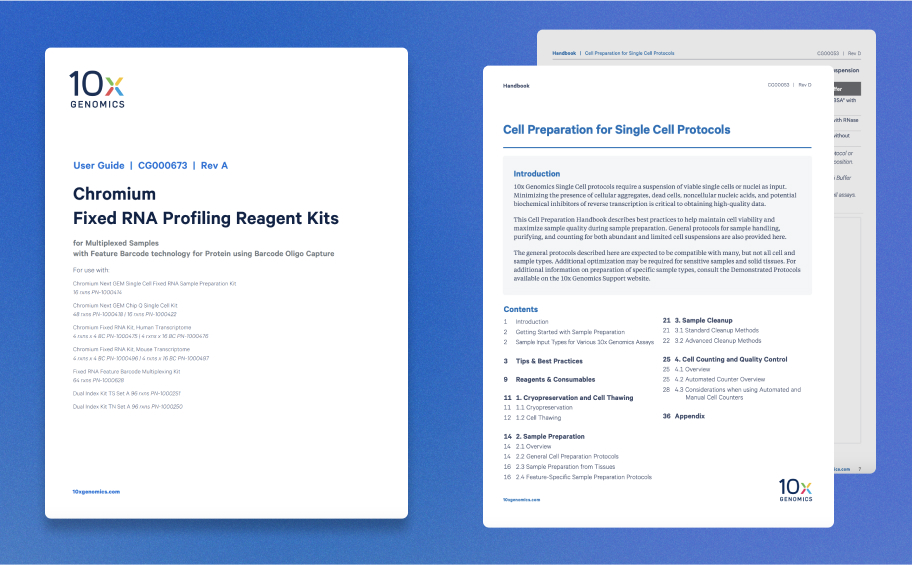 Explore technical documentation
Explore technical documentationGet the answers you need with FAQs, how-to videos, and user guides.
Expand your insights by mapping single cell profiles within the tissue context using Visium, or deepen your understanding of specific targets using Xenium subcellular precision.
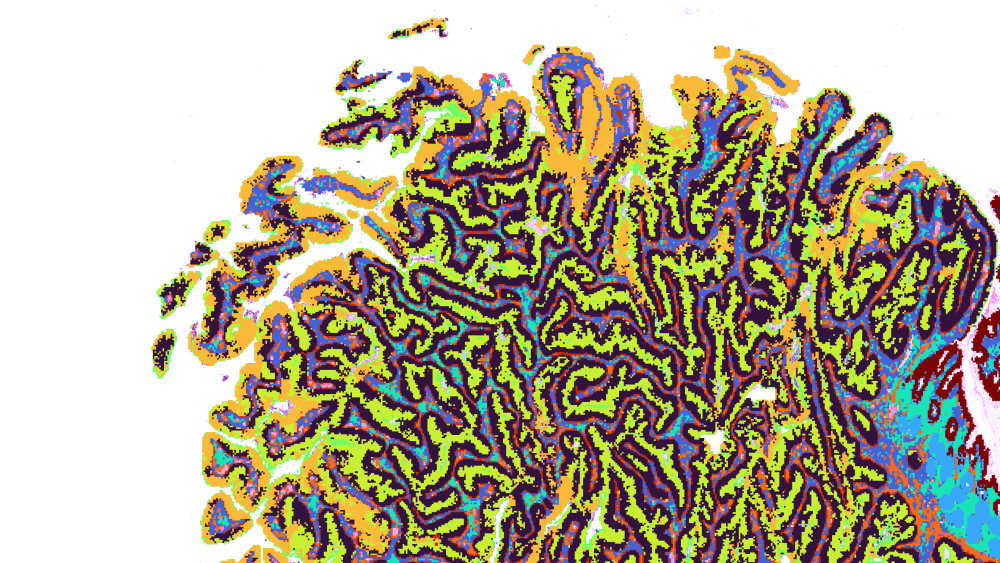 Visium Spatial
Visium SpatialAssess spatial gene expression of FFPE or fresh frozen tissue sections. Harness whole transcriptome discovery while defining the relationship between cellular function and location.
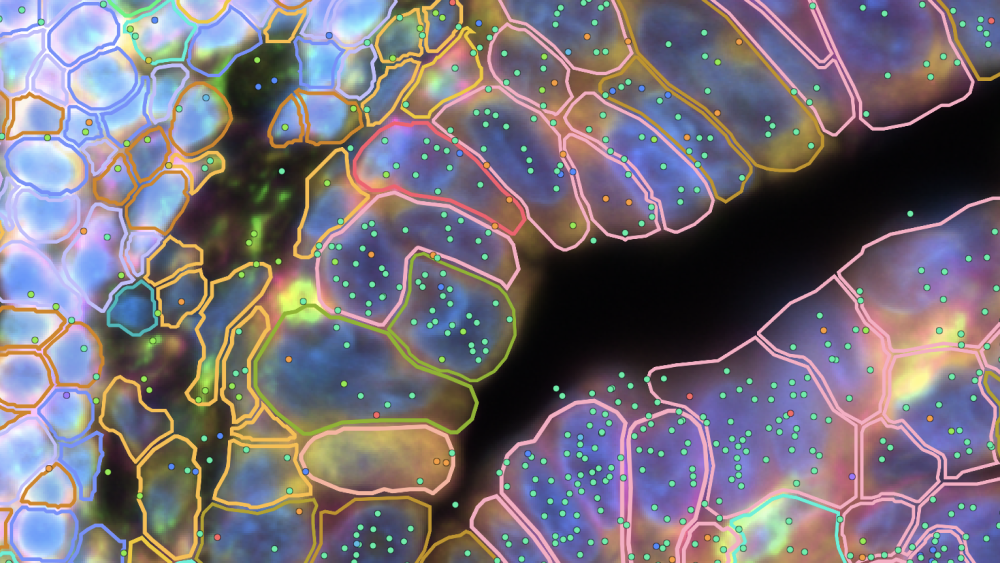 Xenium In Situ
Xenium In SituLocalize hundreds of single-molecule RNA targets with subcellular resolution in tissue sections. Refine and validate biological insights revealed through single cell and spatial analyses.
